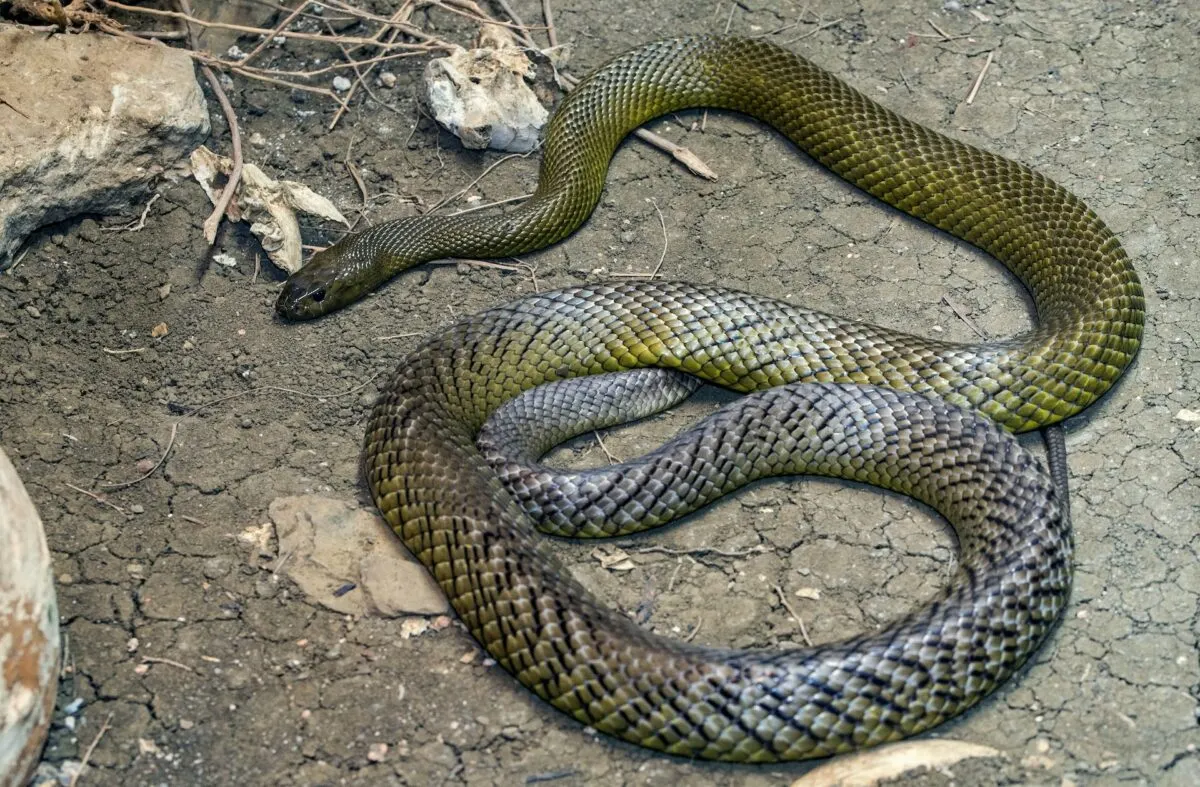Welcome to the Most Venomous Snake in the World – Unveiling its Lethal Venom Secrets.
Snakes have long been feared and revered, with their curved bodies and venomous bites inspiring both fascination and terror. Among the many species of snakes, one stands out as the most venomous of them all.
So what is the #1 Most Lethal Snake in the World?

The Inland Taipan, also known as the “fierce snake,” is a creature that strikes fear into the hearts of even the bravest among us.
- Its venom is so potent that it can cause paralysis and organ failure, and just one bite can be fatal to a human.
We will take a deep dive into the world of the Inland Taipan, exploring what makes it the deadliest serpent on Earth.
As you read on, you will be transported into the mysterious world of snakes, where danger lurks around every corner. As we delve deeper into the science behind the Inland Taipan’s venom, you will feel your heart racing and learn what makes it so deadly.
Want to compare to another snakes bite? You will be on the edge of your seat as we recount stories of encounters with this fearsome creature, and how people have managed to survive its bites.
So, hold on tight as we embark on this thrilling journey together.
The Inland Taipan: The Most Venomous Snake in the World
Hailing from the semi-arid regions of central Australia, the Inland Taipan is a venomous serpent. Despite its modest size, reaching a mere 1.8 meters in length and adorned with striking yellowish-brown scales, this unassuming reptile conceals a lethal secret – it ranks among the world’s most deadly snakes.
How Venomous is the Inland Taipan?
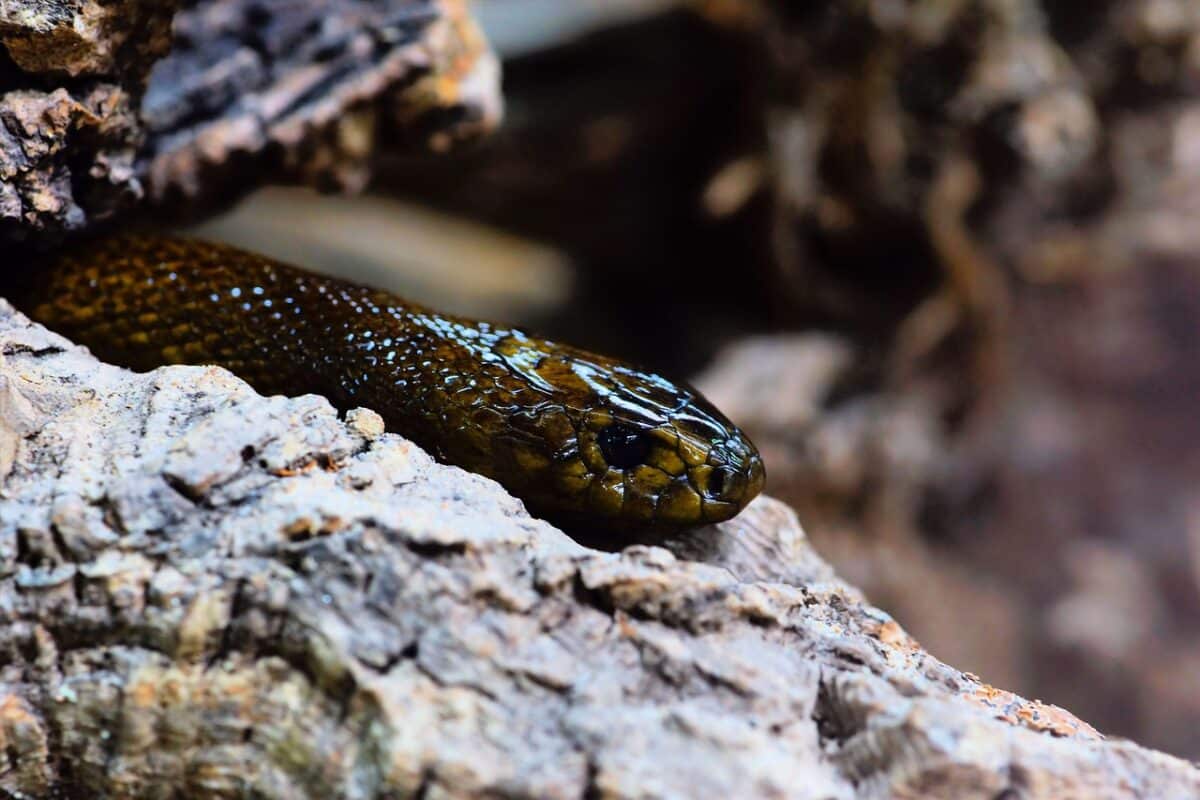
The Inland Taipan’s venom is incredibly potent, with a single bite containing enough venom to kill up to 100 humans.
Its venom contains a potent cocktail of neurotoxins, which attack the nervous system and can cause paralysis, respiratory failure, and death if left untreated.
The venom also contains hemotoxins, which attack the blood and organs, causing severe damage.
Where Does the Inland Taipan Live?
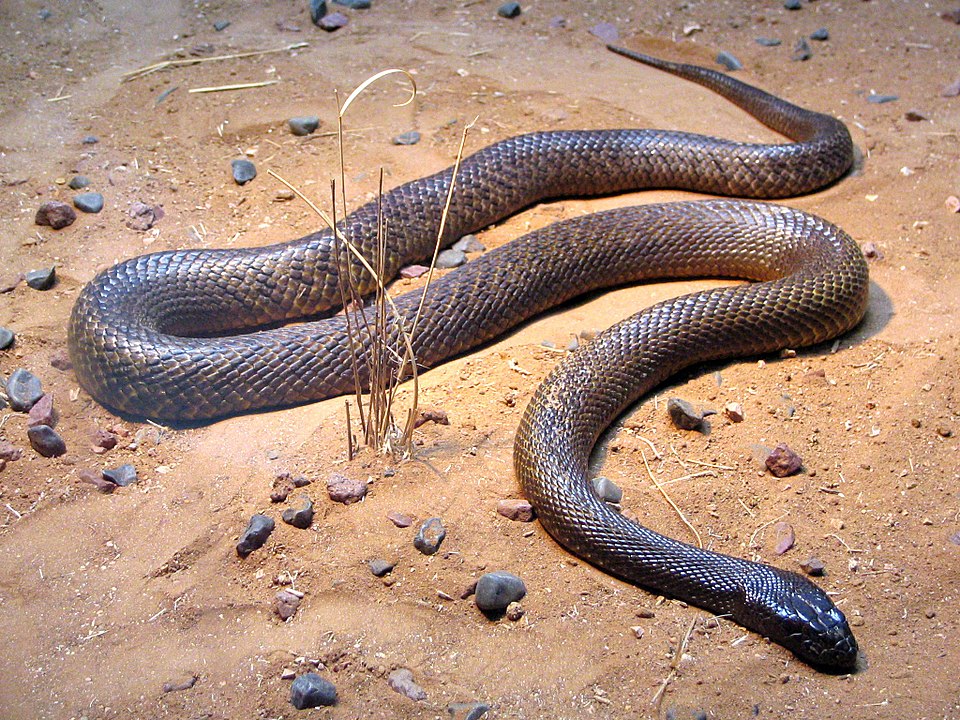
The Inland Taipan is found exclusively in the central region of Australia, in the semi-arid regions of Queensland and South Australia.
It prefers to live in burrows and cracks in the earth, which helps protect it from the harsh desert environment. While it may be a shy and elusive snake, it is still considered one of Australia’s most dangerous creatures.
How Does the Inland Taipan Behave?
The Inland Taipan is a solitary and elusive snake, preferring to avoid human contact whenever possible. It is most active during the cooler months, when it will venture out of its burrow to hunt for prey.
The Inland Taipan feeds primarily on small rodents, but it has been known to prey on other snakes as well.
No, The Inland Taipan Is Not the Same As Western Taipan!
The Inland Taipan and the Western Taipan are two different species of taipan snakes. The Inland Taipan (Oxyuranus microlepidotus) is found in the central region of Australia, while the Western Taipan (Oxyuranus temporalis) is found in the coastal areas of western and northern Australia.
Both snakes are highly venomous and can be very dangerous if provoked. However, the Inland Taipan is considered to have the most potent venom of any snake species in the world.
How to Avoid a Bite from an Inland Taipan
Here are some tips on how to avoid getting bitten by an Inland Taipan:
- Avoiding contact
The best way to avoid getting bitten by an Inland Taipan is to avoid contact with it altogether.
If you are in an area where the snake is known to live, keep a watchful eye out for any signs of its presence, such as shed skin, tracks, or burrows. If you see a snake, give it plenty of space and slowly back away from it.
- Do not attempt to capture or handle
Inland Taipans are shy and elusive creatures that prefer to avoid human contact whenever possible.
However, if you do happen to come across one, do not attempt to capture or handle it, as this is when most bites occur.
In fact, most bites from Inland Taipans occur when people try to kill or capture them. Instead, observe the snake from a safe distance and enjoy its beauty and grace from afar.
- Wear protective clothing
If you are in an area where the Inland Taipan is known to live, it’s a good idea to wear protective clothing, such as long pants and boots, to reduce your chances of getting bitten.
If you are going to be exploring the outback or other remote areas, consider wearing snake-proof gaiters or leggings, which can provide an extra layer of protection against snake bites.
(https://www.youtube.com/watch?v=cblBlYAaTtk)
- Be vigilant when camping
If you are camping in an area where the Inland Taipan is known to live, be extra vigilant when setting up your campsite.
Insider Tip: Look for any signs of snake activity, such as shed skin or tracks, and avoid setting up your tent near potential snake habitats, such as rock piles or burrows.
- Seek medical attention immediately if bitten
If you do happen to get bitten by an Inland Taipan, seek medical attention immediately. This snake’s venom is extremely potent and can cause paralysis, respiratory failure, and death if left untreated.
Do not attempt to treat the bite yourself, as this could make matters worse. Instead, seek medical attention as soon as possible, and follow the advice of your healthcare provider.
10 Most Venomous Snakes In The World
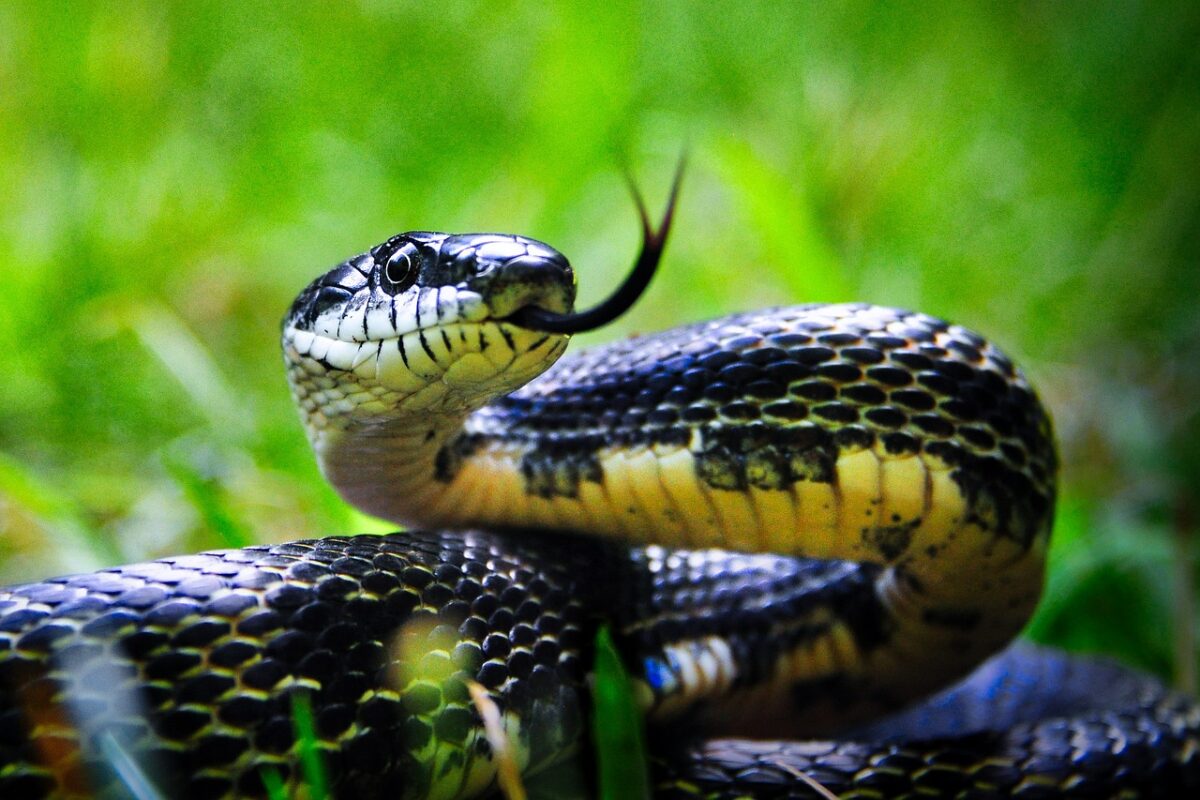
- The Inland Taipan, often dubbed the “Fierce Snake,” reigns as the undisputed champion of venomous serpents worldwide. Its venom is so potent that it can spell doom for humans within a matter of hours without prompt intervention.
- Hailing from Australia and New Guinea, the Eastern Brown Snake boasts a venomous punch that can prove lethal to humans if left untreated. This species is responsible for the highest number of snakebite fatalities in Australia.
- In the heart of sub-Saharan Africa, the Black Mamba strikes fear with its aggressive demeanor and lightning-quick attacks, reaching astounding speeds of up to 12 miles per hour.
- Australia and New Guinea are home to the Taipan, another venomous menace with fast-acting venom that can swiftly claim human lives in mere hours without medical attention.
- Within the wilds of Australia lurks the Tiger Snake, armed with venom potent enough to seal a human’s fate if untreated, contributing to several snakebite fatalities annually.
- Across the Philippine archipelago resides the Philippine Cobra, a venomous serpent capable of causing human fatalities within hours and notorious for its astonishing ability to spit venom up to 10 feet away.
- Australia and New Guinea also house the Death Adder, a venomous viper wielding potent toxins that can bring about human demise within a few hours without timely intervention.
- In the heart of Asia, Russell’s Viper stands as a highly venomous threat, its toxins capable of inflicting fatal consequences upon humans when left unattended.
- Found in the Middle East and Central Asia, the Saw-scaled Viper’s aggressive disposition and rapid, repeated strikes make it a perilous presence in its native habitat.
- The majestic King Cobra, inhabiting India and Southeast Asia, boasts imposing dimensions of up to 18 feet and carries venom of such potency that it can spell death for humans if not promptly treated.
FAQ: The Inland Taipan is Deadly, Fascinating, and Full of Surprises
As we draw close to the end of this thrilling tour of the world’s most venomous snake, let’s take a second to touch on the most frequently asked questions about the Inland Taipan and uncover some fascinating facts about this mysterious and intriguing snake.
- What makes the Inland Taipan venom so deadly?
The Inland Taipan’s venom is a complex mixture of neurotoxins and hemotoxins, which work together to attack the body’s nervous and circulatory systems.
The venom is extremely potent, with a single bite containing enough venom to kill multiple adult humans.
The venom can cause paralysis, respiratory failure, and death if left untreated, making the Inland Taipan one of the most dangerous snakes in the world.
- How fast can the Inland Taipan inject its venom?
The Inland Taipan is capable of injecting its venom in a matter of milliseconds. When it strikes, the snake’s fangs can penetrate deep into the skin, delivering a potent dose of venom directly into the bloodstream.
Because of the speed at which the venom is delivered, it can be difficult to avoid getting bitten once the snake has struck.
- What are the symptoms of an Inland Taipan bite?
The symptoms of an Inland Taipan bite can vary depending on the amount of venom injected and the size and health of the victim.
In general, the first symptoms of a bite include pain, swelling, and bleeding at the site of the bite. Other symptoms can include headache, nausea, vomiting, abdominal pain, muscle weakness, and difficulty breathing.
Without prompt medical treatment, these symptoms can quickly progress to paralysis, respiratory failure, and death.
- Can antivenom cure an Inland Taipan bite?
Yes, antivenom can be used to treat an Inland Taipan bite. However, because the snake’s venom is so potent, multiple doses of antivenom may be required to neutralize the venom completely.
In some cases, the antivenom may not be effective, particularly if treatment is delayed or the snake has injected a large amount of venom.
- What is the difference between venomous and poisonous?
Venomous animals, such as the Inland Taipan, produce toxins that are injected directly into their prey or predators through specialized structures such as fangs or stingers.
Poisonous animals, on the other hand, produce toxins that are ingested or absorbed through the skin. For example, some species of frogs are poisonous, secreting toxins through their skin as a defense mechanism.
- How does the Inland Taipan’s venom affect the body?
The Inland Taipan’s venom contains a complex mixture of neurotoxins and hemotoxins that work together to attack the body’s nervous and circulatory systems.
The venom can cause paralysis, respiratory failure, and death if left untreated. The neurotoxins in the venom can cause muscle weakness, while the hemotoxins can cause bleeding and damage to the circulatory system.
- Where is the Inland Taipan found?
The Inland Taipan is found in the arid regions of central Australia, including the states of Queensland, South Australia, and Western Australia. The snake prefers dry, rocky habitats and is often found in the vicinity of rodent burrows.
- What is the best way to avoid getting bitten by an Inland Taipan?
The best way to avoid getting bitten by an Inland Taipan is to avoid contact altogether. If you do encounter an Inland Taipan, do not attempt to capture or handle it, as this is when most bites occur.
Instead, give the snake plenty of space and slowly back away from it. The Inland Taipan is a shy and elusive creature, and will usually try to avoid confrontation if given the opportunity.
- Can you keep an Inland Taipan as a pet?
No, it is illegal to keep an Inland Taipan as a pet in most countries, including Australia. The Inland Taipan is a highly dangerous animal and is not suitable for captivity.
It is also important to note that keeping any wild animal as a pet is not only illegal but also highly unethical, as it can cause physical and psychological harm to the animal.
- How can we protect the Inland Taipan?
The Inland Taipan is listed as a protected species in Australia, and it is illegal to harm, kill, or capture the snake without a permit.
Conclusion on the Most Venomous Snake in the World
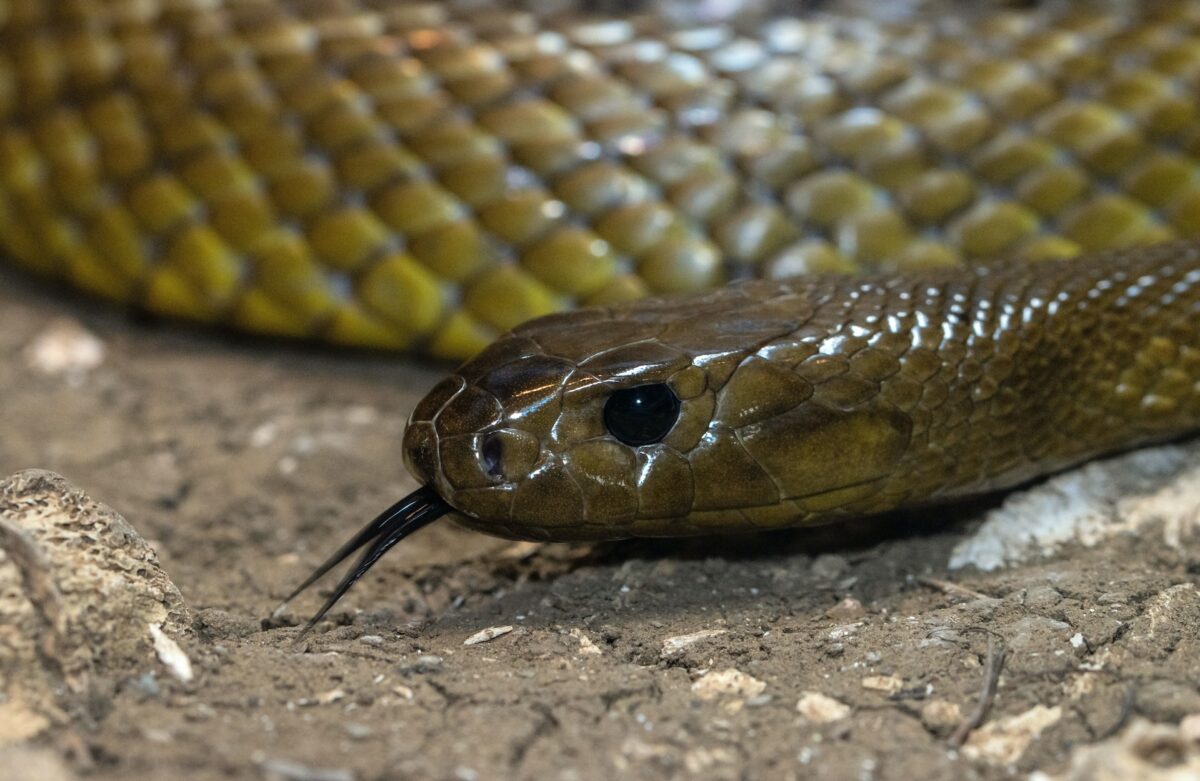
The Inland Taipan is a formidable creature that deserves our respect and awe. Its venom is a reminder that nature is both beautiful and deadly, and that we must tread carefully when venturing into the wild.
We hope that this article has given you a greater appreciation for the wonders of the natural world, and that you will continue to explore and learn about the creatures that inhabit our planet.
Also have a look at the Worlds Largest Anaconda or Sea Snakes: A Complete Guide.
Stay curious, and stay safe!
Join our Forum for free today!

- These are The 5 Largest Great White Sharks Ever Recorded - July 19, 2024
- The Surprising Benefits of Big Game Hunting - July 18, 2024
- $100k+ Hunting Experiences The Most Expensive Animals to Pursue - July 17, 2024

